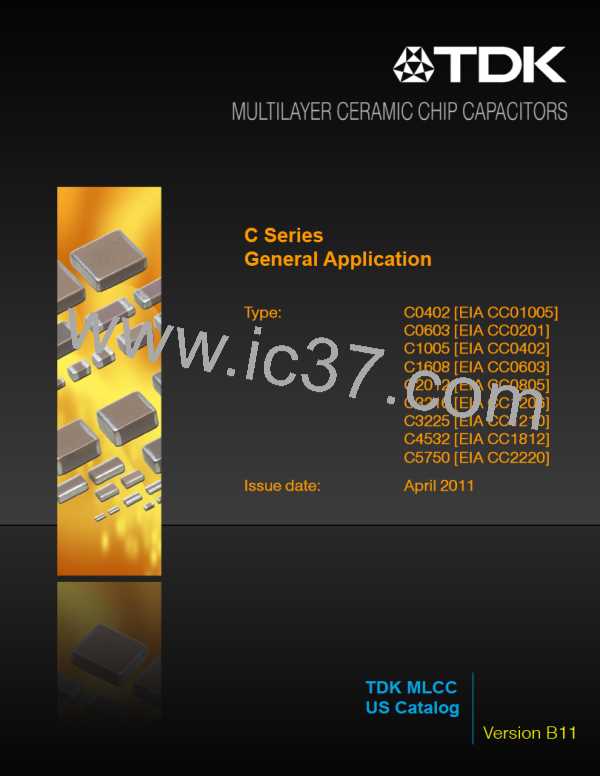General
Specifications
C Series – General Application
No.
13
Item
Performance
Test or Inspection Method
Vibration
Reflow solder the capacitor on P.C. board (shown in
Appendix 1a or Appendix 1b) before testing.
External
No mechanical damage.
Vibrate the capacitor with amplitude of 1.5mm P-P
changing the frequencies from 10Hz to 55Hz and back
to 10Hz after 1min. Repeat this for 2h each in 3
perpendicular directions.
appearance
Change from the
value before test
Capacitance
Characteristics
Class 1
Class 2
C0G ±2.5% or ±0.25pF,
whichever larger.
X5R
X7R
Y5V
± 7.5 %
± 7.5 %
± 20 %
Q (Class 1)
Rated
Capacitance
Q
C ≥ 30pF
1,000 min.
C < 30pF
400+20×C min.
C : Rated capacitance (pF)
D.F. (Class 2)
Meet the initial spec.
14
Temperature cycle
Reflow solder the capacitor on P.C. board (shown in
Appendix 1a or Appendix 1b) before testing.
External
No mechanical damage.
Expose the capacitor in the condition step1 through
step 4 and repeat 5 times consecutively.
appearance
Capacitance
Change from the
value before test
Characteristics
Leave the capacitor in ambient conditions for 6 to 24h
(Class 1) or 24±2h (Class 2) before measurement.
Class 1
Class 2
C0G ±2.5% or ±0.25pF,
whichever larger.
Step
Temperature (ºC)
Time (min.)
30 ± 3
2 – 5
X5R
X7R
Y5V
± 15 %
± 15 %
± 20 %
1
2
3
4
Min. operating temp. ±3
Reference Temp.
Max. operating temp. ± 2
Reference Temp.
30 ± 2
2 - 5
Q (Class 1)
Rated
Q
Capacitance
C ≥ 30pF
1,000 min.
C < 30pF
400+20×C min.
C : Rated capacitance (pF)
D.F. (Class 2)
Meet the initial spec.
Meet the initial spec.
Insulation
Resistance
Voltage
Proof
No insulation breakdown or other
damage.
TDK MLCC US Catalog
Page 67
Version B11

 TDK [ TDK ELECTRONICS ]
TDK [ TDK ELECTRONICS ]